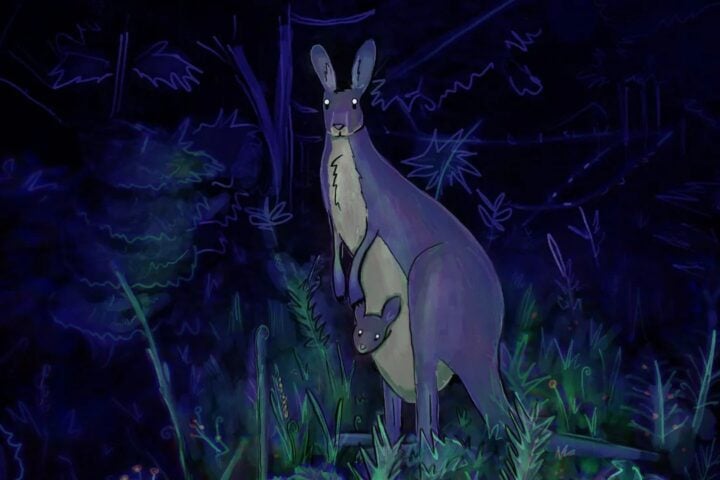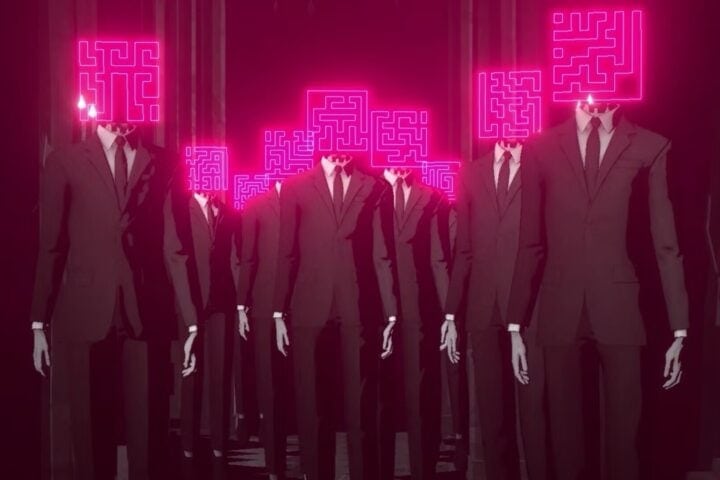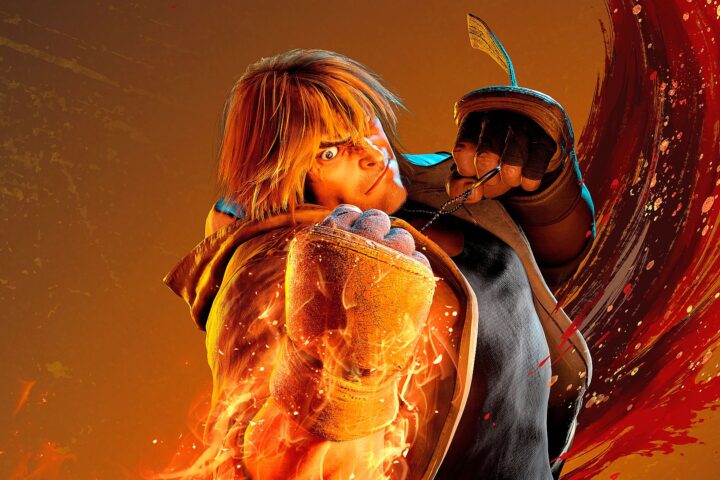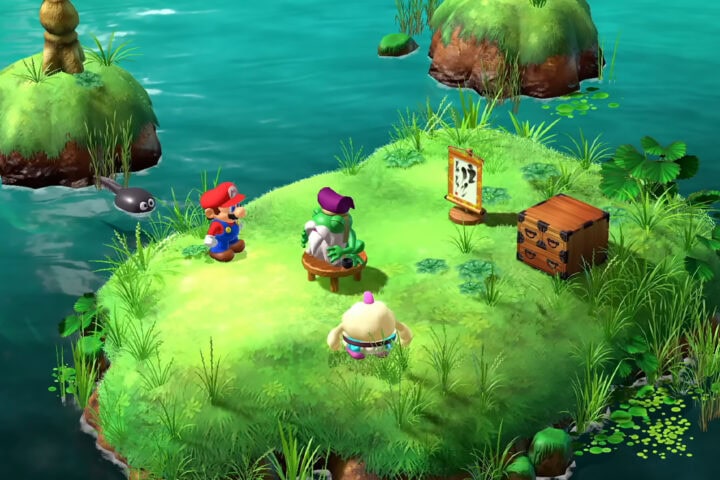In any other medium, a list of the year’s best offerings that was close to predominantly filled with sequels, spin-offs, and spiritual successors might sound warnings of an industry’s creative bankruptcy. Our list of the 25 best video games of 2023, though, signals just the opposite, with developers pushing familiar properties in exciting new directions.
Each and every one of the games below came as a surprise to us in one sense or another. Among those are a trippier-than-ever platformer that seeks to reconnect us to a wonderfully childlike sense of wonder; a self-referential horror sequel that uses tech innovations to rewrite its own rules as it goes; a role-playing game with writing so rich that we can’t wait to make more “bad” decisions; and a remake that feels like a genuine reimagining, driven by a need to retell a story as opposed to a way to cash in on nostalgia. And the other sequels on this list don’t just polish and expand on their predecessors so much as redefine what made them great to begin with.
This year also saw a bumper crop of wildly original new titles. Even those with gameplay rooted in the past tend to zig in always unexpected and surprisingly mature directions. Developers astounded us with the many new mechanisms they used to relay intimate stories, whether that’s in the struggle to remain connected to one’s culture through cooking, the indelible powers of diaries and photography to pass along memories, or the importance of history as you use the literal footholds left behind by your predecessors to scale a mountain and change the future.
From rhythmic action platforming, to gorgeous recursive puzzling chains, to weighty real-time gameplay loops, it’s been a captivating year for gaming, one filled with fresh takes, new ideas, and, above all, great feats of inspiration. Aaron Riccio
25. Sea of Stars (Sabotage Studio)
In a year that brought us plenty of lengthy JRPGs with seemingly endless amounts of narrative throat-clearing, Sea of Stars stood out for dishing out the goods in a little under 30 hours. That’s not to say that this affectionate riff on SNES-era classics like Chrono Trigger skimped on the essentials. Indeed, the game took the genre’s most endearing elements—from an engaging, emotionally rich story to a meticulously detailed open world to explore—and trimmed all unnecessary fat from the final product. There’s not a single grind-a-thon quest in sight. Add to that a slew of memorable characters, an arresting 16-bit art style, and a tactical turn-based battle system with a captivating set of quick-time mechanics and the developers at Sabotage Studio ensured that they would keep players consistently on their toes. Sea of Stars is all gas and no brakes, and it has the thrilling feel of a blast from the past. Paul Attard
24. Cyberpunk 2077: Phantom Liberty (CD Projekt Red)
Cyberpunk 2077 has largely delivered on the experience promised nearly a decade ago by its makers, thanks to the double-barreled assault of the game’s 2.0 patch and, now, Cyberpunk 2077: Phantom Liberty. And in its complete form, Cyberpunk 2077 is, if not a different game, then certainly one operating with clarity of vision. Here, you play a character who can do so much more with their time, and succeed where other Night City hopefuls could not. That all comes to bear in Phantom Liberty proper, an absolute barn-burner of a final flourish for Cyberpunk 2077’s last hurrah. And it all leads to a new available ending for the entire game that’s both a more subtle, sad ending for V than some players may be willing to run with and a strong final statement on the game that was Cyberpunk 2077. Like all of Night City’s heroes, this game had to be torn apart and rebuilt before it could become legendary. Justin Clark
23. Star Wars Jedi: Survivor (Respawn Entertainment)
The main thrust of Star Wars Jedi: Survivor’s story is about Cal Kestis—a little older, a little wiser, but already a lot more tired than he was in Fallen Order—being caught between the determination to keep fighting a losing war and finding a convenient hiding place for those incapable of the kind of resistance that this war demands, and the game makes a strong case for both courses of action. It’s not entirely wall-to-wall grim, as there are plenty of snappy, funny bits of dialogue, as well as some truly inventive and breathtaking alien landscapes and creatures. There’s also physical humor—light moments where you get to literally stop and smell the space roses. There’s even a few spare, surprisingly well-executed moments of romance sprinkled throughout. But never once does the game let you forget that it could all come crashing down at any moment, and when it does, it’s astonishing in how effective and brutal it is. Clark
22. Pizza Tower (Tour De Pizza)
Imagine someone turning a Mr. Bungle album into a fully playable Wario Land mod, and then someone drops a piping hot Domino’s pizza laced with psilocybin mushrooms on the hard drive. Games based on Ren & Stimpy, Beavis & Butthead, and Aeon Flux exist, but few have managed to so thoroughly capture that unnerving, purposefully sloppy scribblepunk look and ethos of early-’90s late-night MTV quite like Pizza Tower, and even fewer that take things to such psychotic visual and conceptual extremes. Every single meticulously hand-drawn frame feels like a hyperkinetic extension of a hilariously distressed mind, and yet, somehow the game manages to stay on the side of the gloriously absurd rather than gross. The real surprise, though, is that to look beyond its conceptual weirdness is to find that Pizza Tower is a legitimately well-crafted, endlessly replayable platformer with a focus on speed, level memorization, and oddball bespoke powerups, underscored by an eclectic banger of a soundtrack. Clark
21. Crypt Underworld (Lilith Zone)
Crypt Underworld: The End of History is the sort of game you might find yourself playing after arriving at the first circle of hell. Essentially Minecraft on a bad acid trip, Lilith Zone’s surreal egglike goes against the basic tenets of what’s considered “good” game design, beginning with its garish color scheme and continuing with its lack of a clear primary objective. And yet, there’s something bold, defiant, even beautiful about the virtual space that it drops us into—a place that wears its grotesqueries as a badge of honor, and uses them as a middle finger to aesthetic respectability. As you tumble down its weirdo rabbit role, it’s as if you’re floating in some unconscious realm where the governing rules of logic no longer apply. The game is outsider art at its most subversive, where abject ugliness is its own form of elegance. Attard
20. Time Bandit – Part 1: Appendages of the Machine (Joel Jordon)
Time Bandit Part 1: Appendages of the Machine is all about stealing from your job to cast off the shackles of capitalism. As a lowly warehouse worker, you’re sneaking time crystals out of a facility right under the nose of the corporation that supplies your equipment, your housing, and the paltry daily wage that also has to buy fuel for your crate-moving forklift. Crucially, this game’s machinery takes more than just purchased fuel to run. It also takes time, and to the tune of 30 real-time minutes for pushing one single crate. And unlike other timer-based games, there’s no way to circumvent this process. Even when you quit and come back, it’s always to set another glacial yet oddly addictive task into motion. In its relentless commitment to foregrounding its themes, this mashup of Metal Gear Solid and Animal Crossing forces us to confront all the precious moments that our labor demands of us. Steven Scaife
19. Venba (Visai Games)
Drawing from Tamil culture and cuisine, Venba tells the story of how the eponymous Venba, who immigrated with her husband to Toronto in the 1980s, tries to bridge the gulf between her and her son, Kavin, with food. Despite its simple gameplay loop—part visual novel and part cooking simulator, with minor puzzle elements—Venba boasts a rich narrative with universally applicable themes about loss, both of family and heritage, and the difficult sacrifices made by parents for the promise of a better life for their children. A shift in perspective brings these themes to the forefront, as an older Kavin attempts to rediscover his lost culture through the shared recipes of the heritage he turned his back on. This is a gorgeously illustrated game that seeks to build a bridge of empathy between audiences and its three-dimensional characters, and it does so by so effortlessly convincing us that everyone has their warts. Ryan Aston
18. Viewfinder (Sad Owl Studios)
As the adage goes, a picture is worth a thousand words. Viewfinder has at least a hundred of them to spare, but the real magic of this first-person photographic puzzle game lies in its artistic, interactive approach to science. Its sense of joy allows it to stand above similar perspective-shifting games like Maquette and Subliminal whose physics, at times, feel much too rigid. It also has a strong narrative through line, with the interactive marginalia of the levels filling in the backgrounds of the four individuals responsible for the simulation. Solutions are built upon but rarely repeated, and some of the optional levels go so far as to introduce elements, such as a weight-activated scale, that aren’t used anywhere else. The background music that plays in each of the hub worlds is jazz, and it’s just as intentional as any of the photographs. Jazz is filled with spontaneous moments of harmony, which turns out to be the main ingredient and lure of Viewfinder. This is a game that, as you retrace the steps of four disparate people who did their best to save humanity, lets you riff along the way. Riccio
17. Lies of P (Neowiz Games and Round8 Studio)
A modern, gothic-horror take on Pinocchio, Lies of P takes the player through the pandemic-stricken city of Krat, once a utopia where robotic puppets satisfied their masters’ whims—until the puppets turned on them for unknown reasons. Awakening in an abandoned train, your humanoid Pinocchio must fight his way through these twisted puppets and the monstrous, mutated survivors to discover the cause of the Petrification Disease and put an end to the horrors that rattle the city. Beyond its dynamic environmental storytelling, Lies of P features impressive weapon-customization mechanics, wherein armaments can be disassembled into separate handles and blades, then mixed and matched. By its conclusion, enough unique features and mechanics have been introduced for the player to feel as if they can tackle every horror, allowing even those who aren’t accustomed to the Soulslike experience to comfortably forge a path to the game’s unsettling finale in a towering man-made hell. Aston
16. Final Fantasy XVI (Square Enix)
“On our terms.” That phrase is gravely intoned by revolutionary outlaw Cidolfus “Cid” Telamon repeatedly in Final Fantasy XVI. It points to many things in the story: from the slave class that’s cursed to exhaust their magic powers until they crumble into dust, to those living in far-flung empires, forced to watch their homes invaded and colonized time and time again, and refusing to do so again. But most importantly, it’s the adopted mantra of Cid’s charge, the orphaned prince Clive Rosfield, who’s borne witness to all the various atrocities staining the land of Valisthea with blood, and resolves to see it all end. This is a seamless, thrilling hybrid of open-world exploration and third-person character-based combat that sees Square Enix overwriting much of what passes for traditional RPG mechanics with a loving embrace of combos and aerial juggles. Watching Clive’s work come to fruition and build the world for future generations may be the most powerful summoning spell ever cast in the entirety of Final Fantasy. Clark
15. Resident Evil 4 (Capcom)
The new Resident Evil 4 knows what worked in the original and makes some smart tweaks for better cohesion between the mechanics. And the developers were ruthless about killing fan darlings when it came to some of the game’s most memorable but tonally dissonant moments. The idea that the aristocrats of Spain will use any means necessary to keep a docile status quo isn’t exactly the thrust of the narrative, but the environmental lore scattered throughout Resident Evil 4 has just the right touch of venom against the ruling class to make that aspect of the story come across stronger than in the original. That narrative strength is bolstered by a far less tin-eared script than that of the original, a graphical upgrade that goes hard on gothic atmosphere and dread, a well-implemented upgrade system with a new-and-improved ornery British merchant (though the recently introduced optional microtransactions are a black mark against him), and creatures that still have a few unforeseen surprises up their sleeves. Clark
14. El Paso, Elsewhere (Strange Scaffold)
El Paso, Elsewhere aspires to more than simply evoke nostalgia for Max Payne, building something new on the bones of the old. As befitting any noir-influenced protagonist, James Savage narrates his predicament in a tortured whisper voiced by the game’s writer and director, Xalavier Nelson Jr., who also raps on the soundtrack. While the character might have come across like a one-note caricature, his narration strikes a surprising balance between sardonic humor and melancholic poetry, ruminating on topics like abusive relationships and addiction. That El Paso, Elsewhere works at all as a drama is a huge achievement. It tackles weighty topics with a maturity that’s rare in gaming, and which is all the more impressive given that it does so within the framework of a shooter that suggests a Halloween attraction as curated by John Woo. It’s emblematic of the game as a whole—a bizarre amalgamation of parts that shouldn’t work yet manages to form something cohesive, soulful, weird, and deeply personal. Scaife
13. Street Fighter 6 (Capcom)
Street Fighter 6 hits hard, and in ways that the series hasn’t since the magnificent Street Fighter III: Third Strike back in 1999. That’s more than a shallow comparison, because even more than Third Strike, Street Fighter 6 goes all in on its stunning neon-graffiti aesthetic, whose wild stylings are underscored by a hip-hop- and acid jazz-infused soundtrack that makes the game feel more like a semi-photoreal Jet Set Radio than a Street Fighter experience. But that’s just on the surface, because this is a game that successfully channels the halcyon days of Street Fighter’s arcade dominance, and it’s on an adrenaline-fueled quest to get everyone hyped to get back into a ring where they all belong. This is the most feature-rich, welcoming, and inclusive package ever crafted for a fighting game—a stylish reassertion of creative dominance for the series that started it all, and an endlessly rewarding new foundation for its future. Clark
12. Octopath Traveler II (Square Enix and Acquire)
Think of Octopath Traveler II as a dim sum of RPG storytelling, a collection of eight savory novellas. Though there’s an epilogue of sorts that more traditionally links together the eight playable characters, their stories are until that point standalone. The game’s eight stories have different stakes, from becoming a dancing star, to avenging the murder of one’s family, to even taking down capitalism. And the boss fights demonstrate Octopath Traveler II’s finest and densest storytelling feature: its 2D-HD pixel art. The game presents itself with the confidence and experience of a deluxe guided tour, marking all the key spots for you to visit but also encouraging you to wander off the beaten path. It’s utterly engrossing without ever feeling overwhelming, and every system feels fine-tuned for maximal enjoyment. And with so many different experiences in one package, it’s a great game to get lost in eight times over. Riccio
11. Jusant (Don’t Nod)
Look down and you’ll see an endless expanse of salt and desert. Look up and you’ll see no end to the mountain you’re climbing, only the space where it vanishes into the clouds. All the world here is neither the past below nor the future above, but rather the moment-to-moment of each handhold, as you climb, swing, and rappel your way forward. Throughout, the game uses its mechanics to foreground the idea that we take seemingly mundane things for granted. Though Jusant gets a bit fanciful in its last level, abandoning its natural elements for an astronomical excursion, the rapturous feeling of climbing the seemingly unclimbable continues to drive the game forward. This is where Jusant’s deliberate, precise mechanics are so vital, as the more responsive the controls, the more responsible players are for each outcome. Nothing is impossible, the game suggests. You just have to take it one step at a time. Riccio
10. Hi-Fi Rush (Tango Gameworks)
The look of Hi-Fi Rush might inspire warm, fuzzy feelings of nostalgia for the gone-but-not-forgotten Jet Set Radio games, and it plays like the kind of beat-’em-up gem that Clover Studios might’ve pumped out as a follow up to Viewtiful Joe. But just under the surface of the beautiful and glossy cel-shaded aesthetic, snappy dialogue, and winking satire is a deep-seated anger. The game is profoundly aware of how artistic dreams and creativity get melted down into the grease that makes capitalism’s gears turn. It may look and often act like a Saturday-morning cartoon, but the second it has Chai taking down giant capitalist mech warriors with a makeshift guitar to the beat of Nine Inch Nails songs, it reveals the wild, rebellious cyberpunk in its heart. Clark
9. Marvel’s Spider-Man 2 (Insomniac Games)
Spider-Man 2 revels in the unfettered joy of swinging and—thanks to the much needed practical addition of Spidey’s web wings—gliding through the streets of New York. Life here is more vibrant than ever, with its populace reacting to Peter Parker and Miles Morales’s presence in tiny but appreciable ways. It all creates an environment where even the smallest task or collectable quest leads to unexpected interactions with the characters and the world they inhabit, running the gamut of tone. Insomniac’s New York City isn’t an empty place for the player to destroy at will, Peter and Miles aren’t audience ciphers, and the story isn’t there for padding. Great power has been employed to bring this world to life on an unprecedented scale. Insomniac’s great responsibility was in filling that world with life, love, and something even Peter’s Uncle Ben forgot to imbue his nephew with, and most games of this type must aspire to emulate: Insomniac’s Spider-Man sequel is a game driven by great purpose. Clark
8. Armored Core VI: Fires of Rubicon (FromSoftware)
Armored Core VI: Fires of Rubicon marks the triumphant return of FromSoftware’s giant robot series, which was largely dormant ever since the developer entered the Soulslike business. And despite a long decade of silence, Fires of Rubicon is proudly faithful to the mission-based structure and intricate customization of its predecessors. Mech piloting has simply never felt this good, unfolding at blistering speeds and involving unholy amounts of ordnance. True to franchise form, your mercenary pilot can rely equally on the balletic, rocket-boosted grace of a light, high-speed mech or the overwhelming firepower of a heavy-duty, tank-mounted robot, as well as any number of loadouts in between. What Armored Core rightly recognizes, though, is that these war machines could only exist against a truly dystopian backdrop, where you and your unscrupulous handler do the bidding of corporations that are stripping a planet dry in order to line their pockets and, of course, manufacture the very parts you use in battle. Scaife
7. A Space for the Unbound (Mojiken)
The central mechanism of A Space for the Unbound is a magical red book that allows one of game’s main characters to “dive” into the hearts of troubled citizens. There, their feelings and problems manifest as visual metaphors, which can in turn be interacted with and solved in classic adventure-game style. This pixel art game’s prologue makes his specific type of manipulation even more explicit: Atma’s power is to edit. It’s only appropriate, then, that this sumptuous and at times surreal game feels so tightly streamlined, a seven-hour slice of life across a bustling four-block span of a fictional Indonesian city in the 1990s. Nothing about A Space for the Unbound is wasted. Even the optional fetch quests are designed to get players to run back and forth across the town, to familiarize themselves with its uneven streets and residents, and to remember where they may have once seen a bitter melon or a discarded bike, should they ever encounter someone down the road in need of one. Riccio
6. Humanity (tha LTD)
Humanity’s puzzles, which involve using a dog made of light to program a series of actions that guide a constant stream of humans to a glowing goal, check the necessary boxes. They’re layered and twisty, and while solutions aren’t as revelatory as in some other puzzlers, they’re still hard won, coalescing slowly one barked command at a time. The game’s collectibles smartly reward detailed mastery by unlocking the tools—like a fast-forward button and an option to restart a level while retaining your current series of commands—required to push your mastery even further. And though many puzzle games have adopted a similar air of philosophical deepness, few back it up with so much gut-wrenching visual spectacle. Faceless masses hurl themselves mindlessly into a variety of deaths, simply awaiting your directions. The terrifying implications are reminiscent of Katamari, except Humanity’s terror is one of endless time rather than boundless size, and in this game there’s no joke coming to break the tension. Mitchell Demorest
5. Cocoon (Geometric Interactive)
The world of Cocoon is a place equal parts reminiscent of the Shimmer from Alex Garland’s adaptation of Jeff VanderMeer’s Annihilation and the organic lifeforms that sprout in any number of Björk music videos. Throughout, you’re harnessing the building blocks that make up the natural world, though here they’ve been warped into something vaguely familiar yet demonstrably alien. This is the world within worlds that Cocoon’s player character, a cicada-like creature, is birthed into. Over the course of the game’s short play time, you wander those worlds solving puzzles, pushing forward as you unravel the mysteries that are laced into the landscapes. In the process you find out just how quickly one can adapt to any environment. That’s a feat of wordless narrative design that every puzzle game developer breaks their brains in half trying to achieve, and yet Cocoon makes it feel so effortless and organic. Clark
4. Super Mario Bros. Wonder (Nintendo)
There isn’t a single level in Super Mario Bros. Wonder that doesn’t deliver on the promise of the game’s title. Its maximalism is evident even in its world map, a glorious mix of constrained paths and explorable environments that also lays bare how the game is fundamentally a checklist of things to do: cooperatively themed Search Party treasure hunts, combative KO Arenas that harken back to the original Mario Bros. arcade game, a series of Wiggler Races that will test your speed-running skills, and relaxed and bite-sized Break Time levels. That this short and relatively easy game never forces you to master (or even use) abilities like a grappling hook or gliding cap speaks to just how much it’s trying to do, but such minor flaws don’t come at the expense of joy. Wonder is a platforming playground for all ages that, at its best, redefines Mario’s world as one of unlimited potential. Riccio
3. The Legend of Zelda: Tears of the Kingdom (Nintendo)
In many ways, The Legend of Zelda: Tears of the Kingdom finds the Legend of Zelda series at its most conservative. But the mechanics and design ethos so intently preserved from Breath of the Wild remain an enormous departure from series formula, and the sequel’s additions are in service not of retreading its predecessor’s terrain, but of evolving it, as well as altering how we perceive the Hyrule landscape. Even the simple ability to throw items other than your weapons has huge reverberations for the player experience, especially when combined with newfound abilities to pick up objects and fuse them together. The triumph of Tears of the Kingdom is how it drives the player to experiment at every turn. The intuitive sandbox puzzling drives you to search for solutions from tools laid out before you or the makeshift weaponry you’ve brought along, reaping rewards as well as hilarious consequences. Scaife
2. Baldur’s Gate 3 (Larian Studios)
Much has been made of the impressive detail with which Baldur’s Gate 3 recreates the experience of playing fifth edition Dungeons & Dragons. It’s all there: perception checks, long rests, the ability to push a creature as a bonus action during combat. And, just as importantly, every manicured inch of the game, from a stray dog in the woods to the flow of the excellent (and excellently performed) main story, reacts to you in a surprisingly human way, conjuring the illusion that somehow, somewhere, a real dungeon master is rolling dice and making decisions on the fly that are tailored to your exact playthrough. Perhaps most impressively, the game is able to deliver all this granularity and responsiveness while remaining surprisingly light on its feet. Instead of feeling fiddly or onerous, the game manages to maintain a quick, effortless flow that would be the envy of many RPGs with half its mechanical heft. Demorest
1. Alan Wake II (Remedy Entertainment)
At heart, Alan Wake 2 is a game about confronting despair, and it meets that goal head on at every turn. The game’s ambition is most visible in the way that it doubles down with two uniquely playable characters, whose perspectives overlap as one, Alan Wake, attempts to rewrite the plot of the nightmare world that he’s trapped in while the other, F.B.I. agent Saga Anderson, investigates the chilling results of his reality-warping powers. Across Alan Wake 2’s spiraling narrative, in which art imitates life and vice versa, the fully realized use of an unreliable narrator gives weight to the sublime survival horror aspects, a porous world in which monsters bleed freely through holes in reality, and fiction attempts to fill the void. Remedy Entertainment goes for broke in this regard, utilizing a wide range of artistic mediums, from immersive theater to live-action talk shows and interactive music videos, to ground the surreal in the real. Thanks to the studio’s efforts and creativity, every inch of this playable fever dream offers an unexpected thrill, a light-bending, reality-warping battle against the ultimate imposter syndrome. Riccio
Since 2001, we've brought you uncompromising, candid takes on the world of film, music, television, video games, theater, and more. Independently owned and operated publications like Slant have been hit hard in recent years, but we’re committed to keeping our content free and accessible—meaning no paywalls or fees.
If you like what we do, please consider subscribing to our Patreon or making a donation.







Alan Wake 2 riding that recency bias like Tony Hawk at the X games.
I coulda told ya BG3 was going be #2. It’s the obvious #1, but since when does good old Slant (and I say this affectionately) do the obvious thing?
Giving Zelda Totk a 3/5 in their review, yet still putting it on spot nr. 3 for best games on 2023 is just laughable